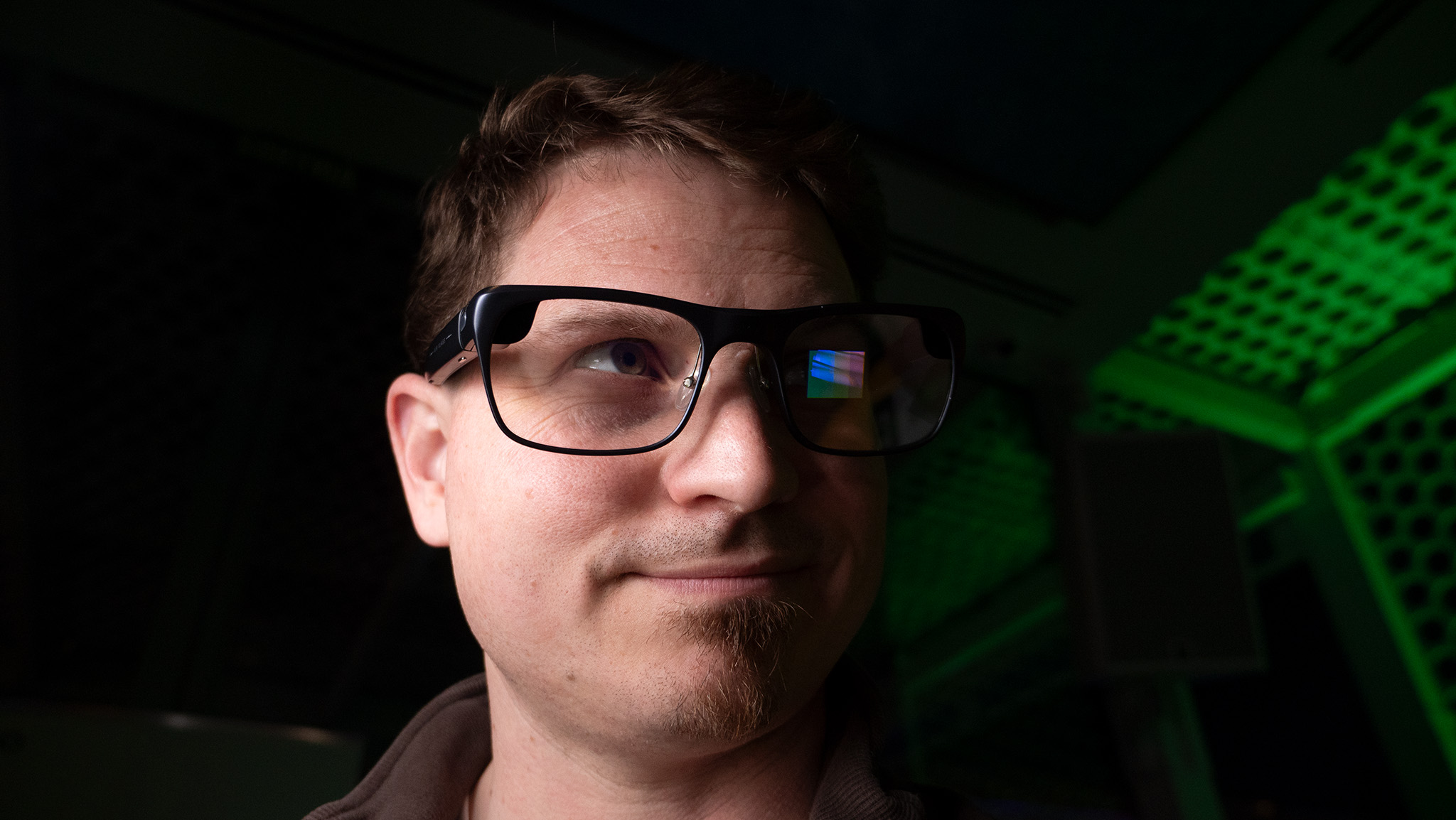
Up until now, AR glasses have been mostly disappointing. Established companies like TCL and Oppo have dabbled in smart glasses but the products delivered have often left a lot to be desired. Thankfully, 2024 is the year that AR glasses finally started getting good, and I got to try a bunch of new AR glasses that I actually like, which is a nice change of pace, for once.

In his weekly column, Android Central Senior Content Producer Nick Sutrich delves into all things VR, from new hardware to new games, upcoming technologies, and so much more.
I saw brand new smart glasses from Oppo that look exactly like a regular pair of glasses. I’ve been using the new Viture One glasses during my long flights to and from Spain to avoid neck pain. And I even got a glimpse of the future of spatial glasses from Xreal, one of the companies at the forefront of innovation in the sector.
All of these things point toward an XR industry that's pushing the boundaries of the tech, refining and perfecting products until they match our vaulted expectations of what smart glasses should be, not what they have been. The idea that we'll all be walking around with connected vision wear in the near future feels more real than ever.
Smart display glasses

Xreal Air 2 Ultra spatial glasses will be available to buy in less than two months now, making it the most compelling AR product I saw at the show. If you've worn a pair of smart display glasses from a company like Xreal, TCL, or one of the many other brands available, you'll immediately recognize the form factor.
Xreal doesn't radically change the outward concept here — although these look a lot nicer thanks to the titanium edge all around the frame — but it does add something important to make it feel more palpable: spatial movement, also known as 6DoF (six degrees of freedom).
Having fully tracked spatial movement on a product as small and unobtrusive as Xreal Air 2 Ultra is nothing short of stunning, and I was left blown away by my demo at the show. When you put on a pair of Xreal Air 2 Ultra's and pair it with the smartphone or PC Xreal app, you'll see a spatially-anchored set of windows right in front of you. In other words, the virtual windows present stay put where they were placed, even if you get up and walk around.

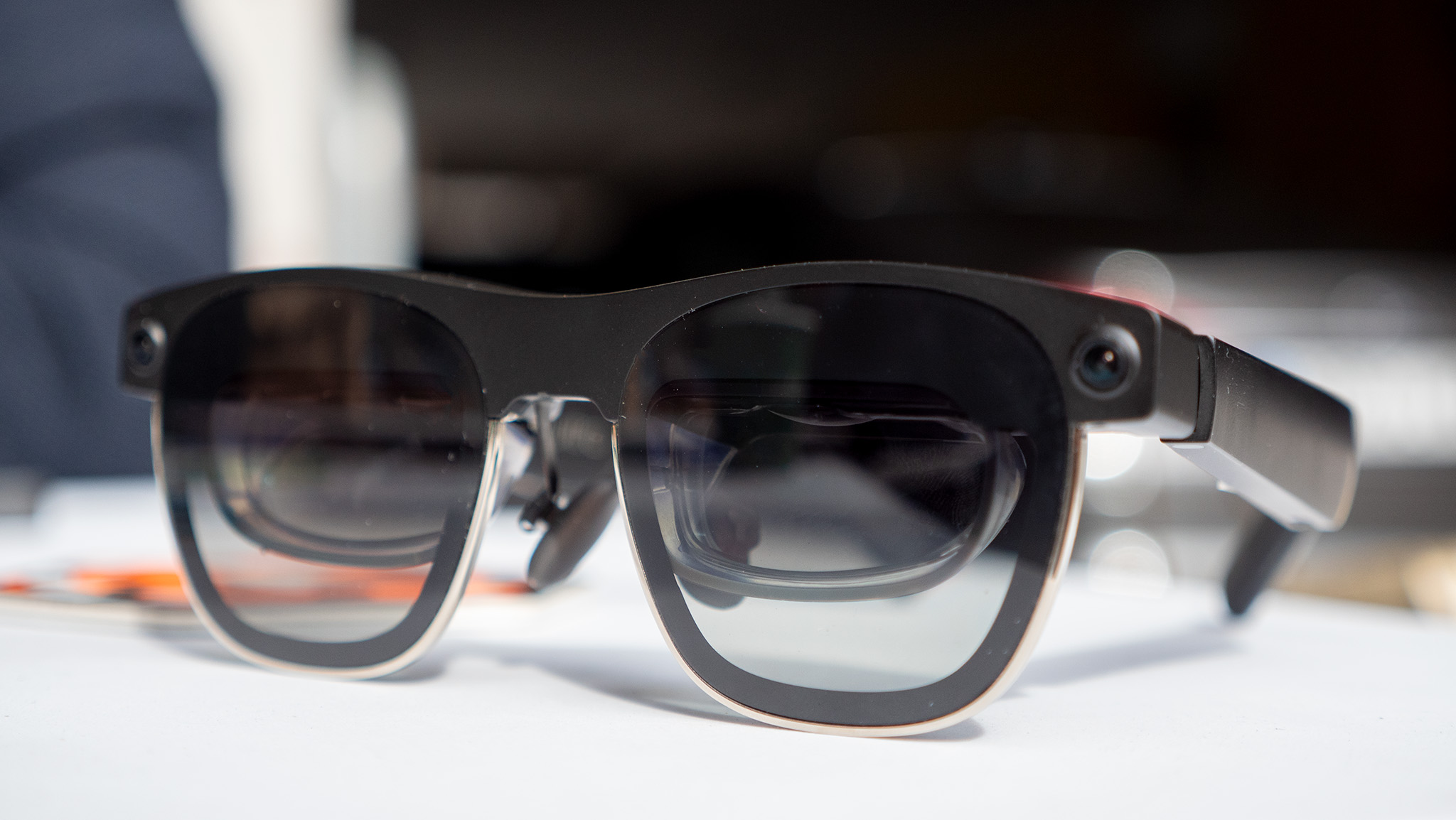
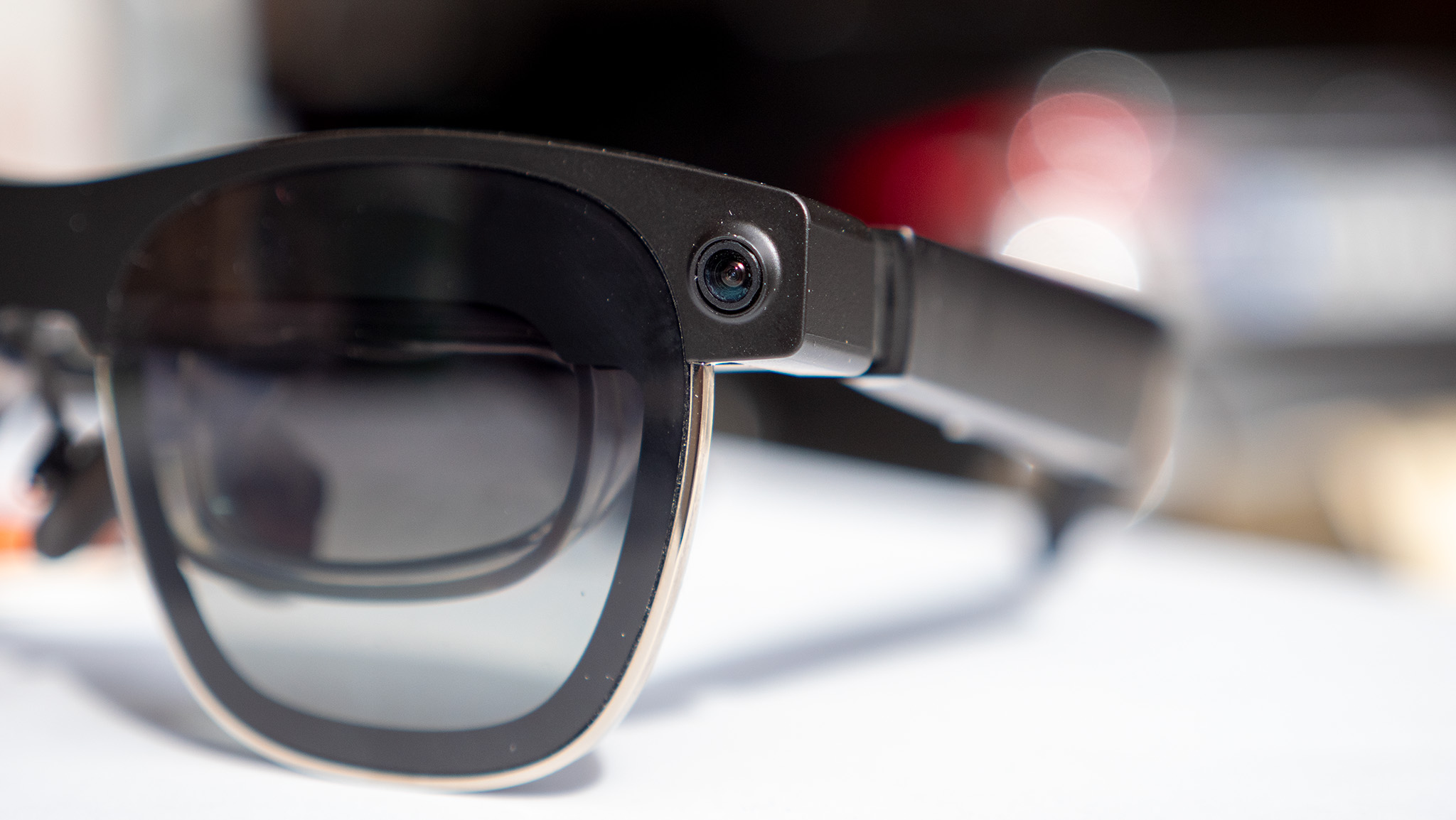
Previous generations of smart display glasses either tether the windows to your head movement - something that feels genuinely uncomfortable if you move around too much.
Even the best smart display glasses, like the pair of Viture One glasses I've been wearing while working on the plane during this long trip, can only anchor windows in 3DoF space. That means the window will stay mostly in place when you move your head but is extremely prone to drifting, worse than Nintendo Switch joysticks.
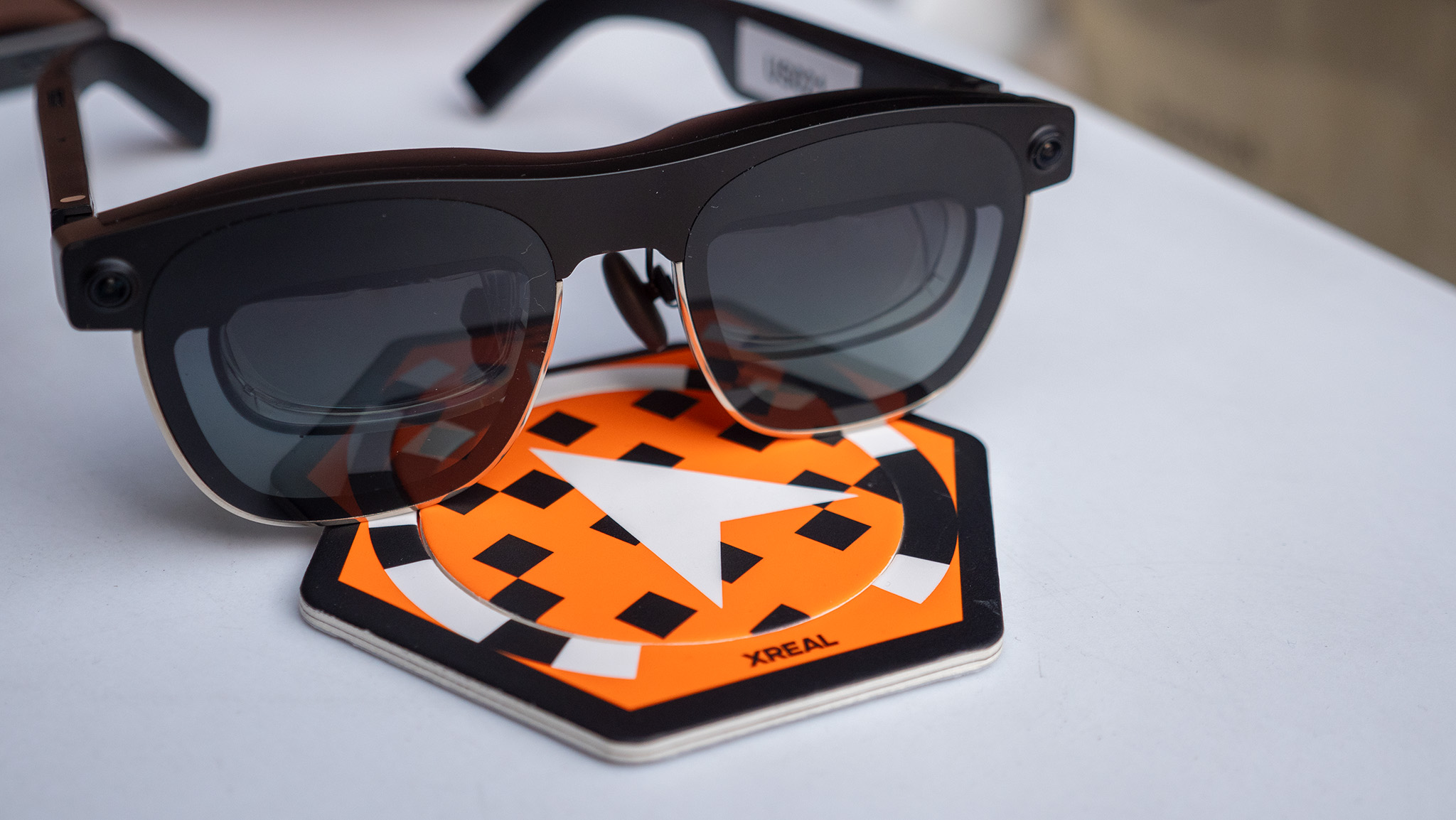
The trick here is the set of cameras and a depth sensor on Xreal Air 2 Ultra, enabling it to properly map out the space around you. Xreal's head of PR, Ralph Jodice, had me click a button to see what the glasses see, and it showed a polygonal grid all around me - that's the digital representation of what's physically around my person.
Jodice even pulled out a trio of "pucks," as Xreal calls them, which have unique QR codes and symbols on them the glasses recognize. This makes them actionable in the customizable user interface of the glasses, becoming real-world buttons to switch modes from within the glasses themselves.
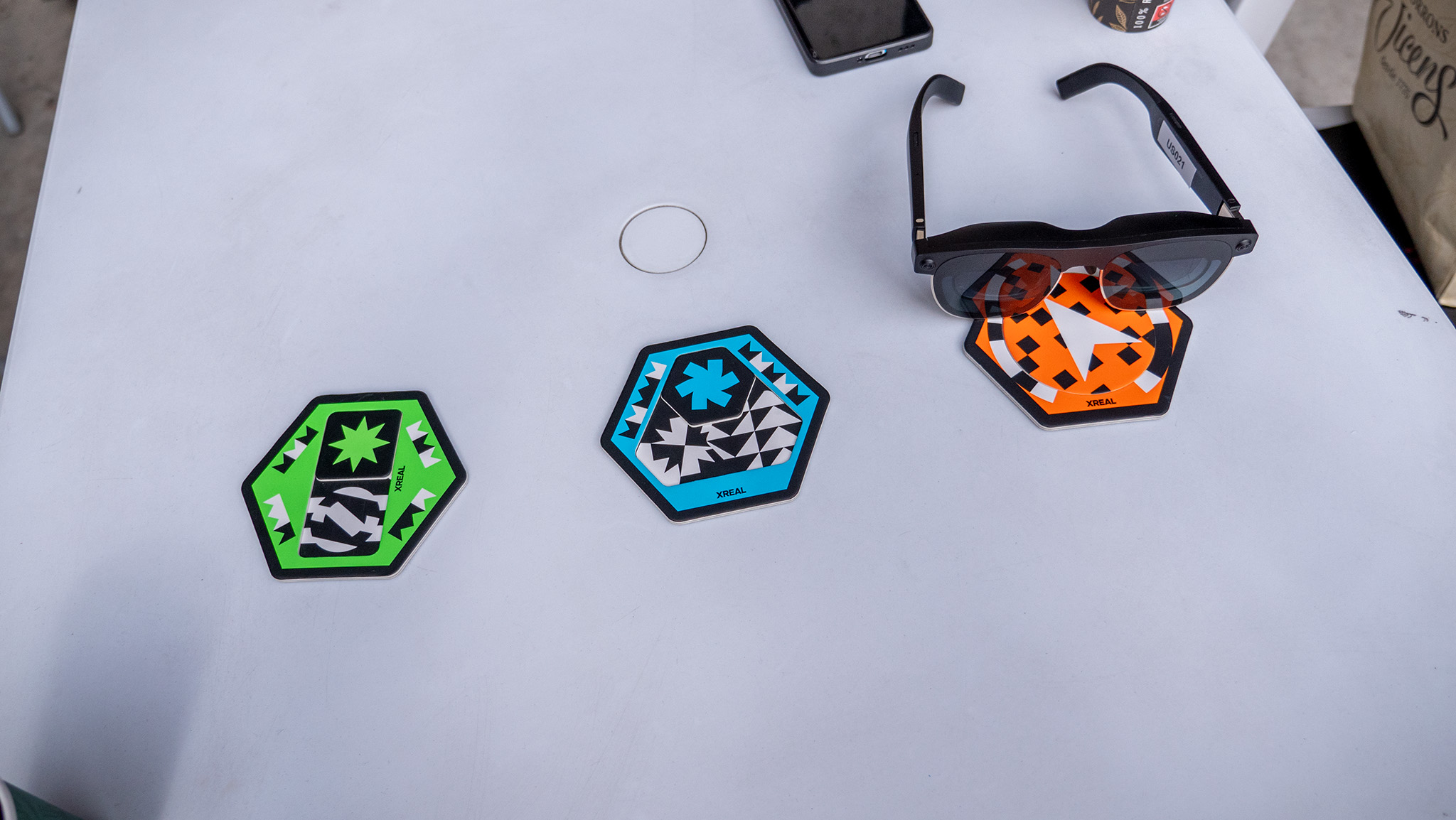
Sliding a piece one way would toggle between work and play modes, while another puck could be rotated to show a 3D model I could physically pick up and turn around to view closer. I could even get up and walk around the table, seeing the UI in real space, then sit down and continue from where I previously left off.
The glasses even supported hand tracking, but my demo around lots of people in broad daylight didn't do a great job of showing off the tech since it kept getting interference.
But, like most AR experiences up to this point, much of what I saw was mainly a tech demo designed to show off the tech and incentivize developers to start making apps for the ecosystem. In the meantime, Jodice tells me that windows and apps from your phone will soon be able to be anchored in 3D space, helping make it an extension of your phone. After all, the glasses have to be plugged into a smartphone or computer with the Xreal app, as the glasses have very minimal onboard processing capabilities.
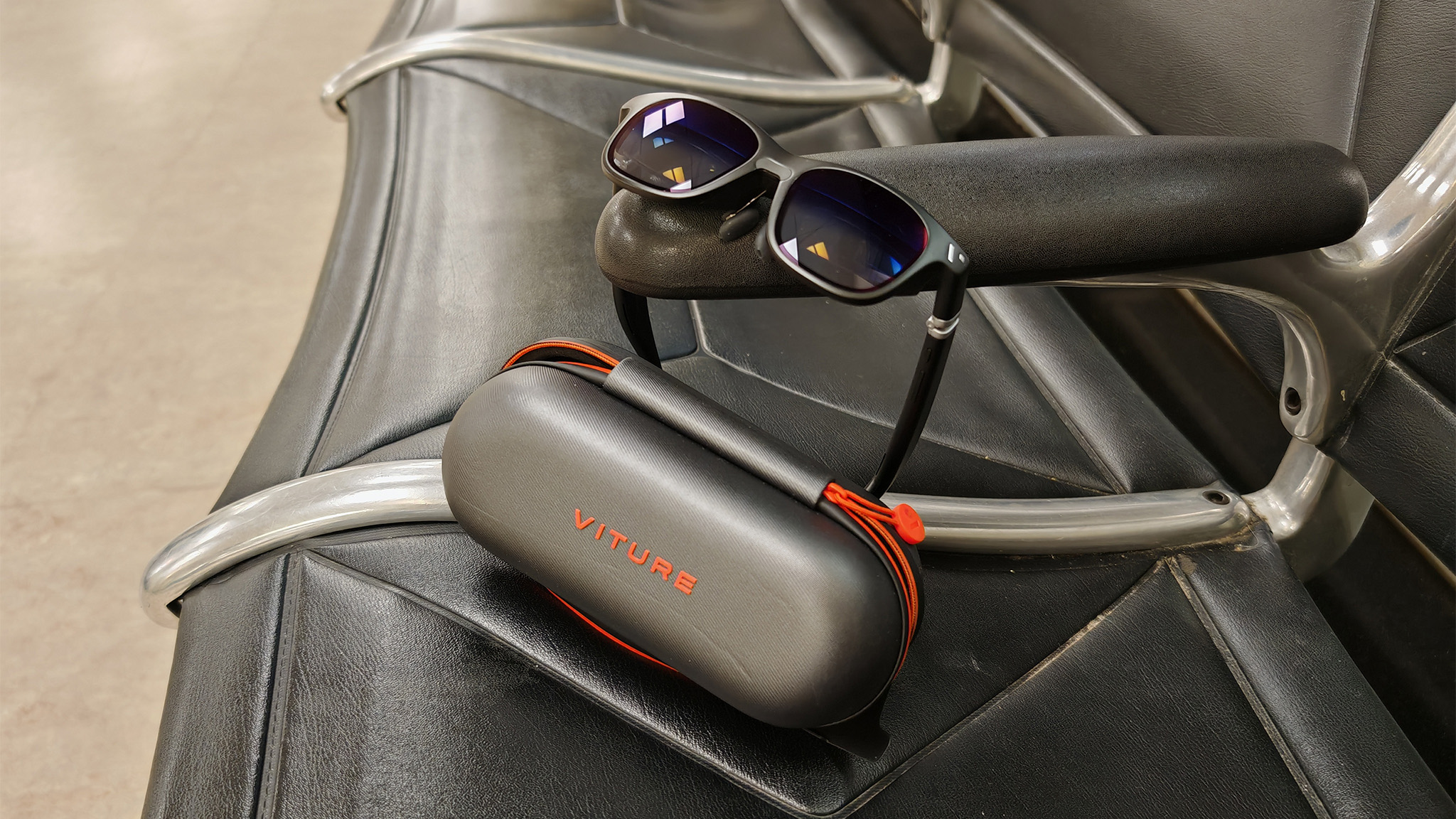
In the meantime, I'll be using these Viture One smart display glasses, which are the most comfortable smart display glasses I've ever used. A huge part of that is the fact that the OLED panels inside don't use PWM dimming at maximum brightness, enabling me to use them for long periods of time without headaches or eye pain.
The fact that I was able to use them for the majority of my 11-hour-long flight back home without discomfort is a testament to how well these are designed.
Dropping the brightness below this switches to 240Hz PWM dimming, but I'm glad the company offers some sort of respite for people like me who are sensitive to strobing lights and display flicker.
The fact that I was able to use them for the majority of my 11-hour-long flight back home without discomfort is a testament to how well these are designed. So far, every other pair of smart display glasses I've used hurt my eyes within a few minutes of use.
Plus, anyone who has myopia between -0.1 and -5 can use the built-in diopter adjustment wheels above each lens, making it simple to adjust when needed. It's got a built-in 3DoF mode but, as is the case with TCL RayNeo glasses that support the same feature, it's prone to drifting if you move too much.
Assisted reality glasses

Google Glass was the first pair of Assisted Reality glasses, commonly abbreviated aR (small letter A). These provide turn-by-turn directions so you don't have to constantly pull up your phone when walking around unfamiliar cities, and they can also display notifications and other bits of actionable information.
Oppo debuted its Air Glass 3 aR glasses at MWC 2024, and they are by far the sleekest pair of smart glasses I've ever seen. They look identical to a normal pair of glasses with thicker arms, but not thick in the way we've come to think of smart glasses frames. If they didn't say "AIR GLASS" on the side, you'd never know they housed a dual pair of waveguide micro-OLED panels inside of each lens.
Each temple has a speaker, and a set of four microphones can be used to invoke your favorite virtual assistant or freely chat on a phone call. But existing smart glasses all have those features - including the excellent Meta Ray-Ban Smart Glasses - so what makes these special? Those in-lens displays, of course.

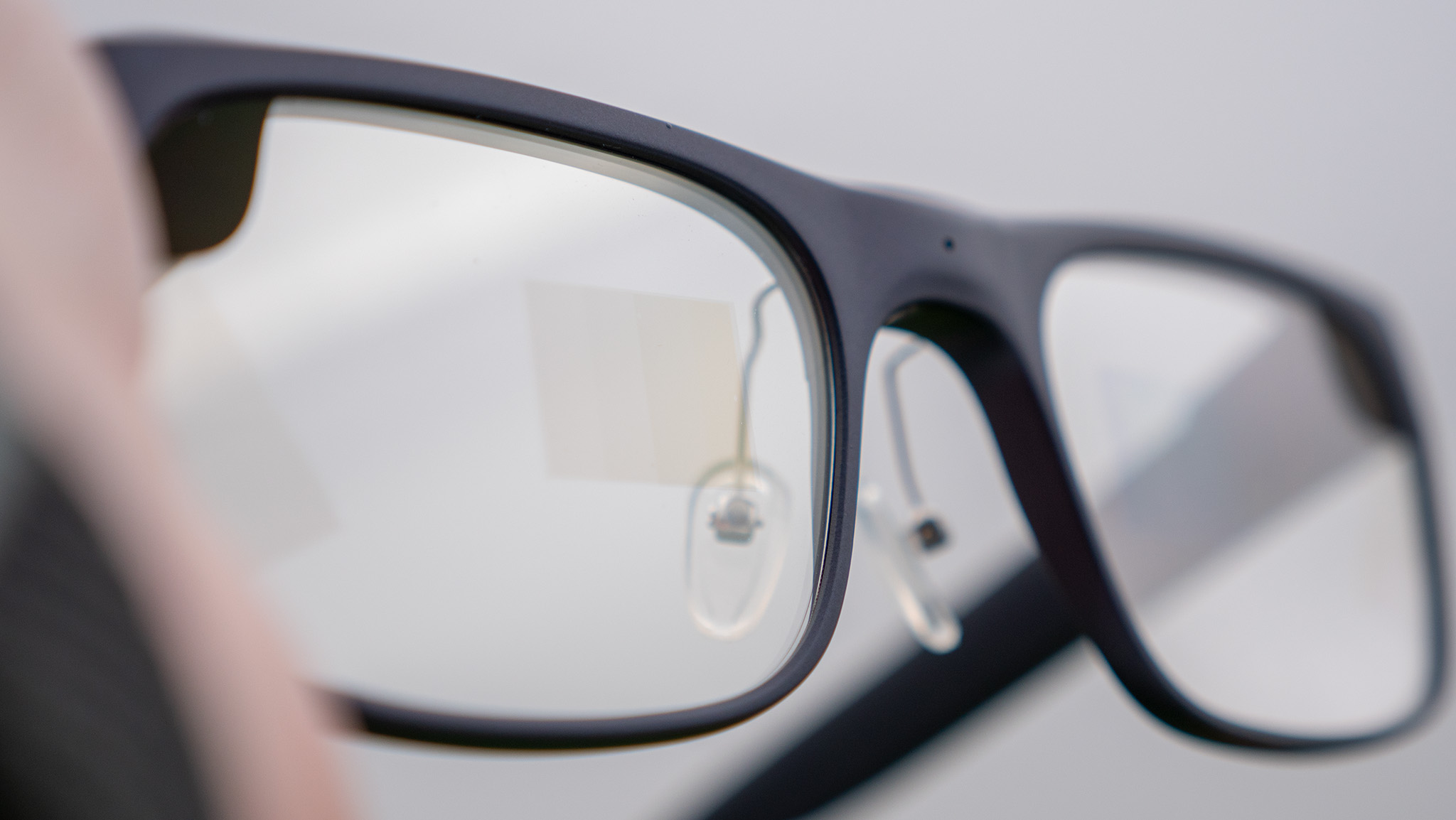
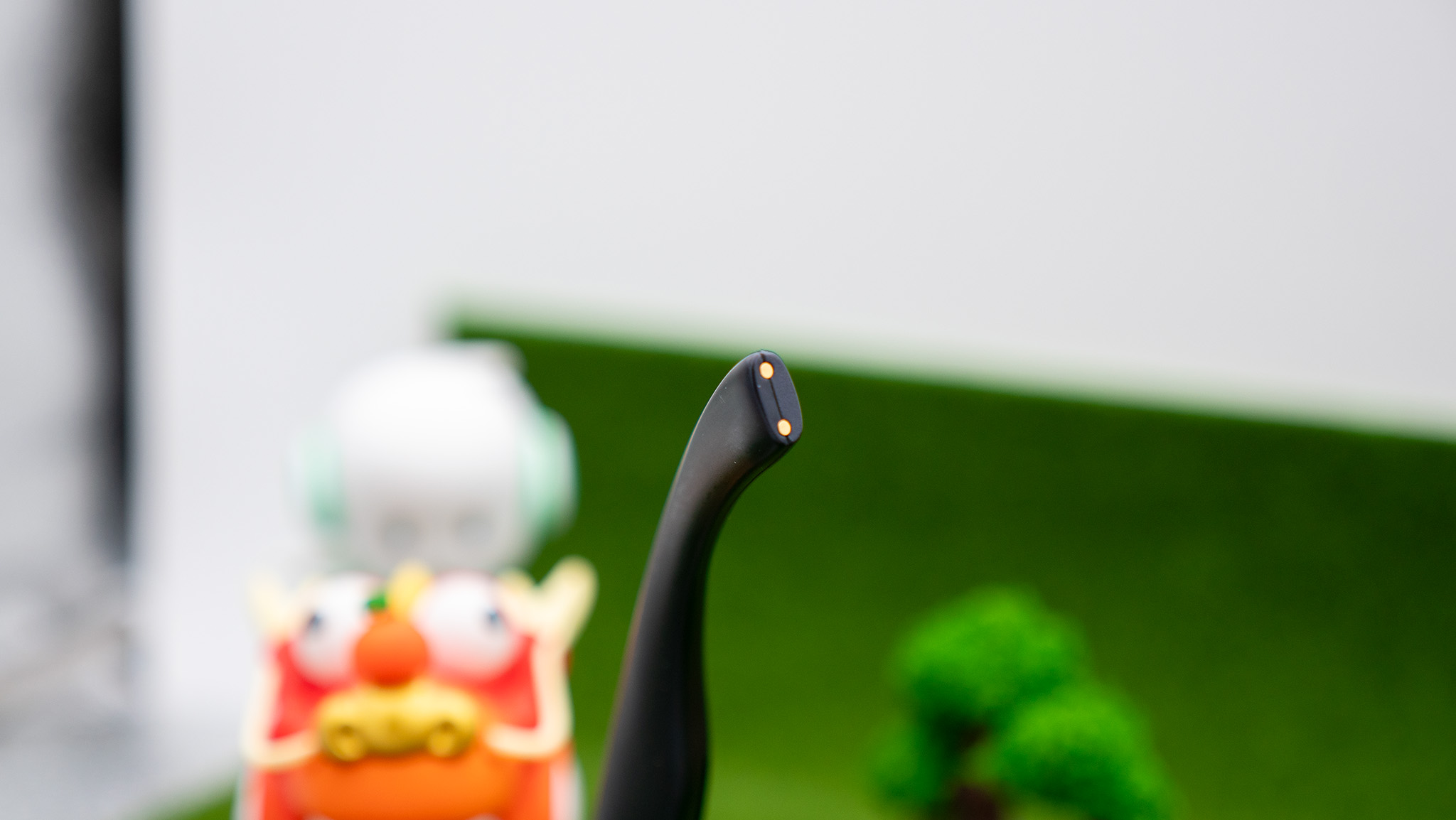
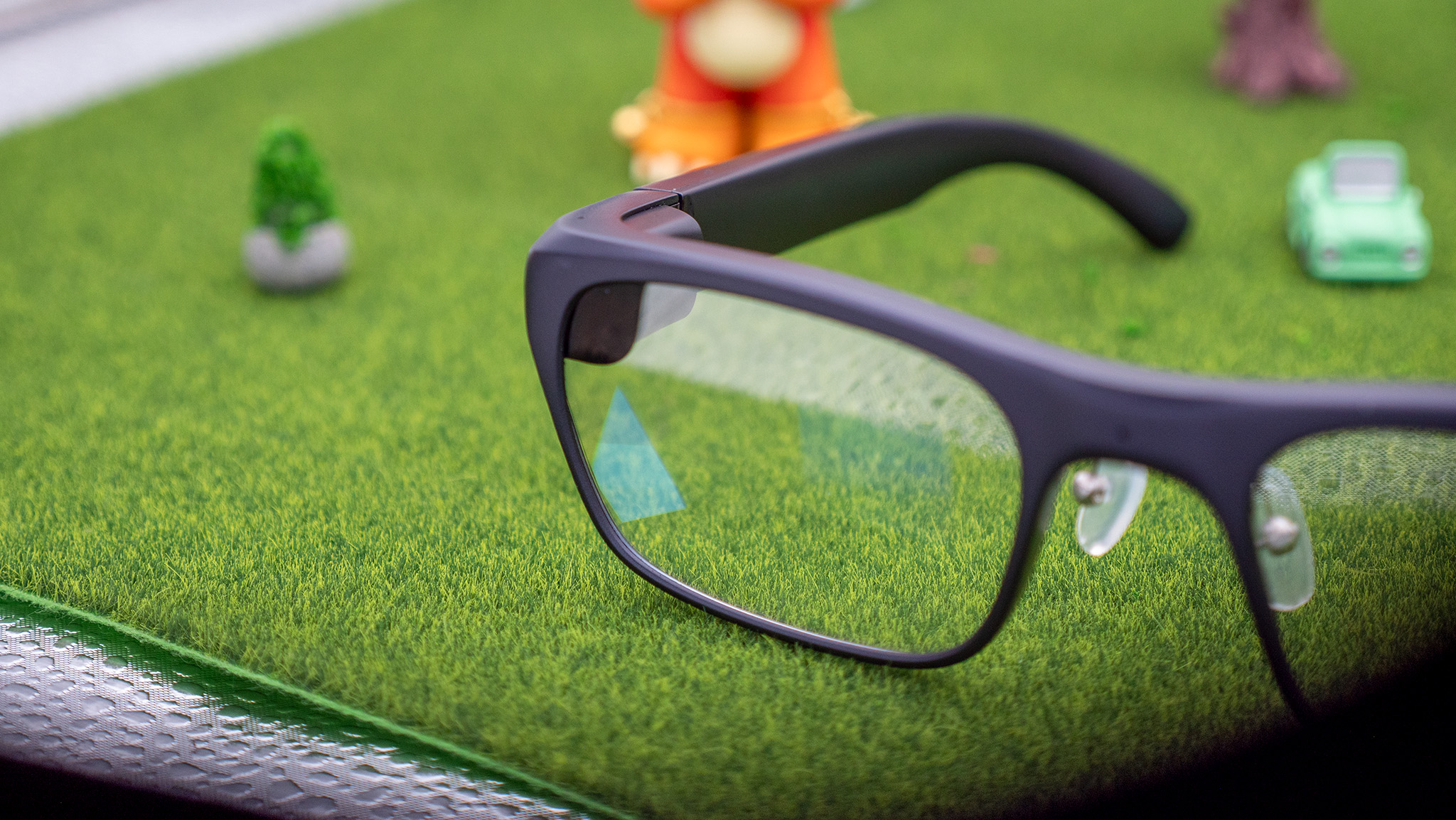
These are the crispest, cleanest waveform displays I've seen to date, able to display information you might want to see without obstructing your view of the real world. Oppo tells me these are designed to deliver actionable information so you don't have to constantly look at your phone or smartwatch when notifications come in or when you want to change the song you're listening to.
Those displays have an incredibly low maximum refractive index and very uniform brightness, so the display is visible in nearly any lighting condition. Oppo also says these displays have the least rainbow effect of any OST display solution in the field. Oppo's version of ChatGPT, called AndesGPT, powers the glasses and can be used to query all sorts of things you might want to know.
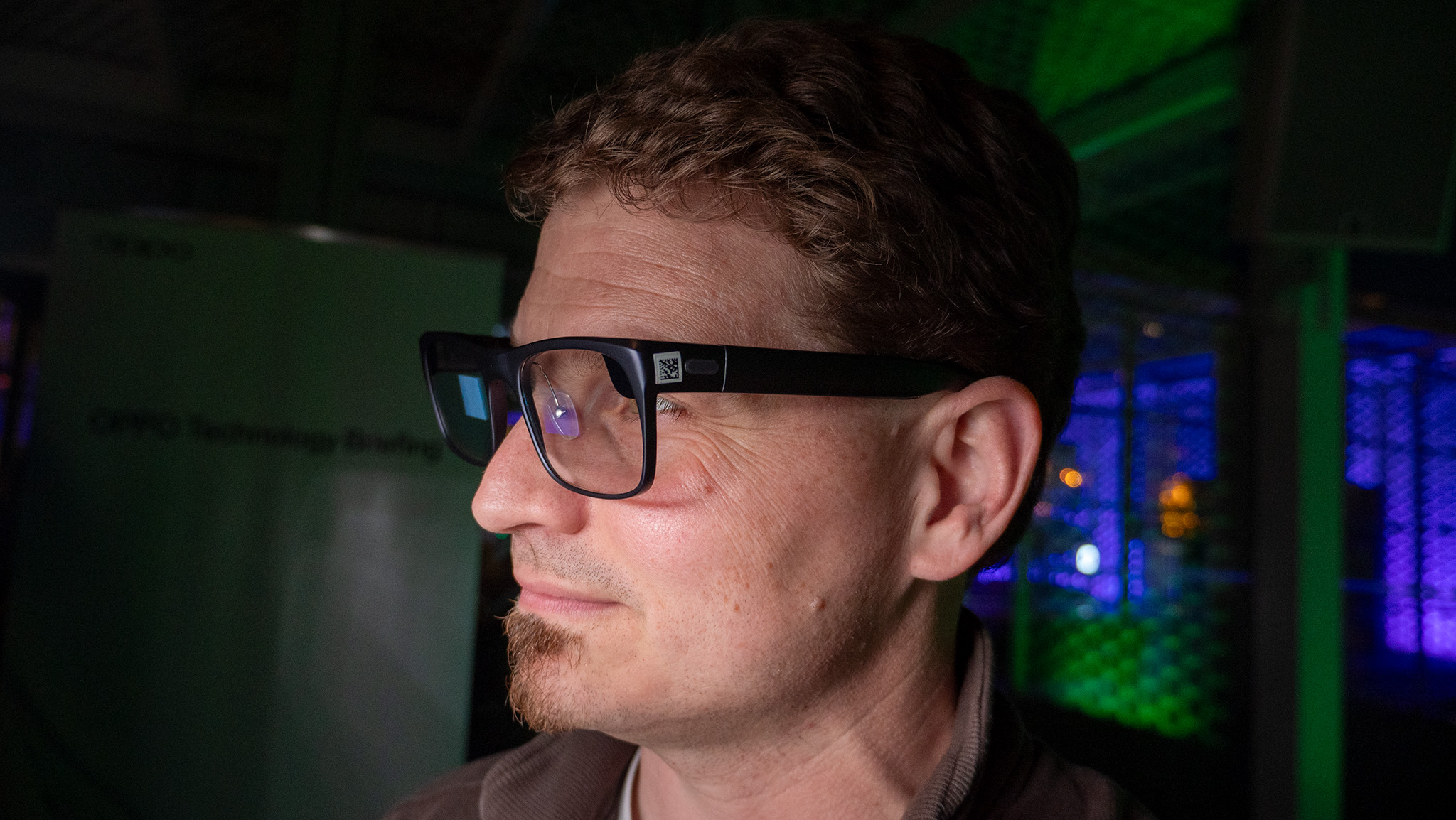

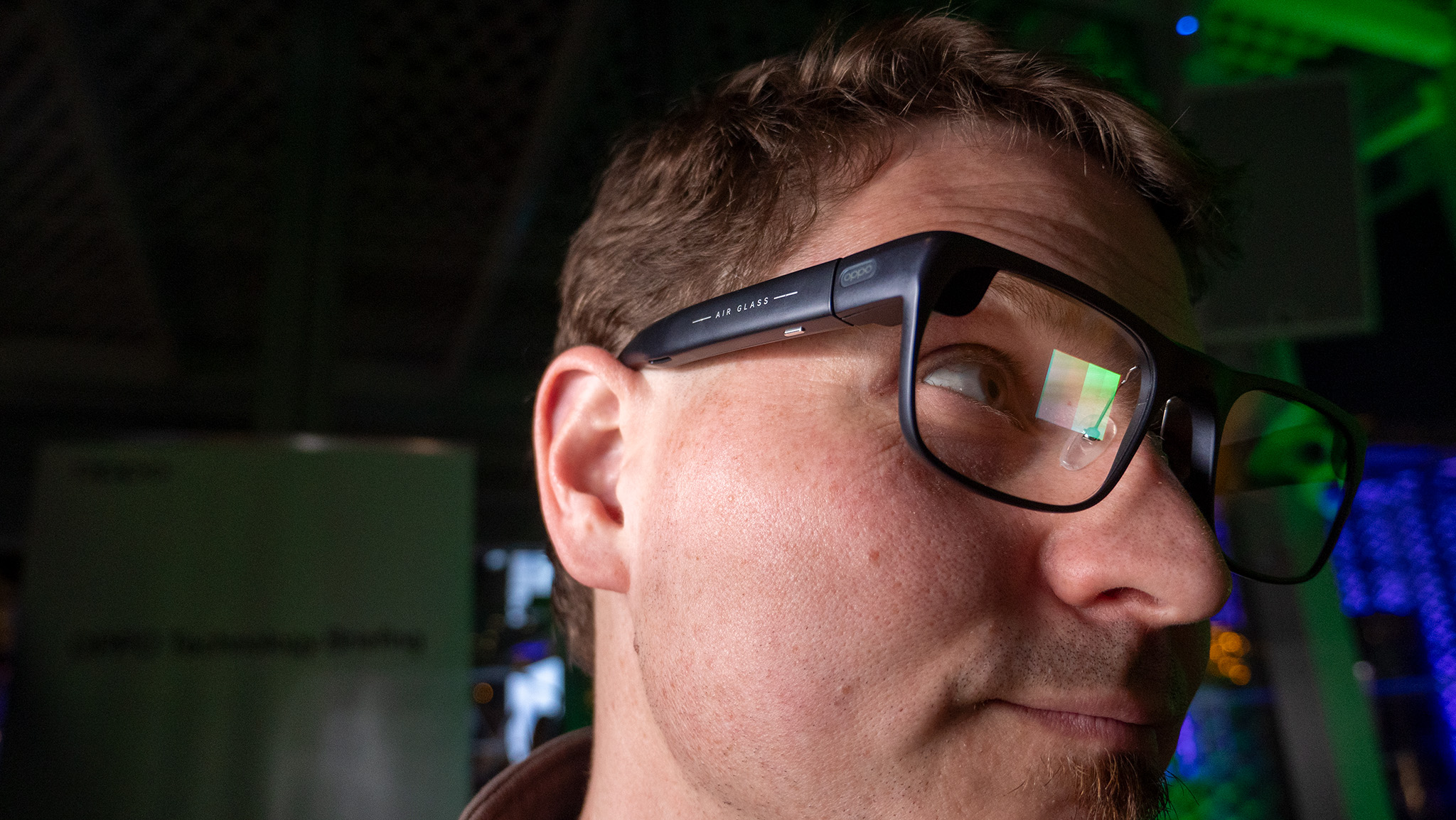
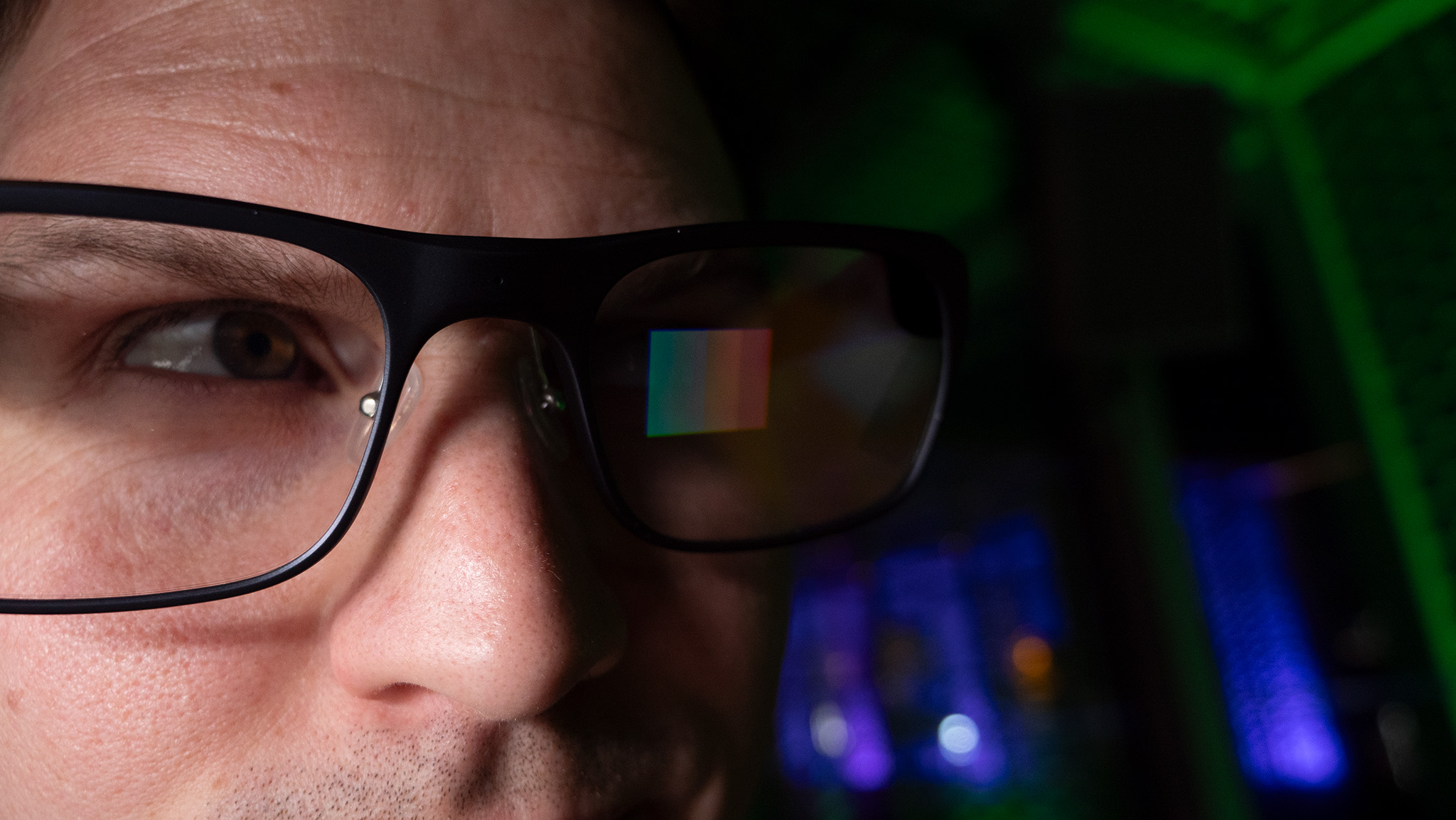
The biggest problem? These still aren't a consumer product. Rather, it's another prototype moving toward the vision of smart glasses people will actually want to use.
Right now, my greatest concern is over long-term usage. I found much of the demo to be incredibly comfortable to use but the ones I saw only displayed content on the display in the right lens.
Oppo representatives tell me that these glasses are capable of displaying 3D imagery by using both lenses but without any sort of IPD (interpupillary distance) adjustment, I'm not convinced most people will be able to use them for long periods of time without getting a headache.
Of course, Oppo and Xreal weren't the only companies debuting AR tech at the show but I found these two examples to be the most compelling from a consumer standpoint.
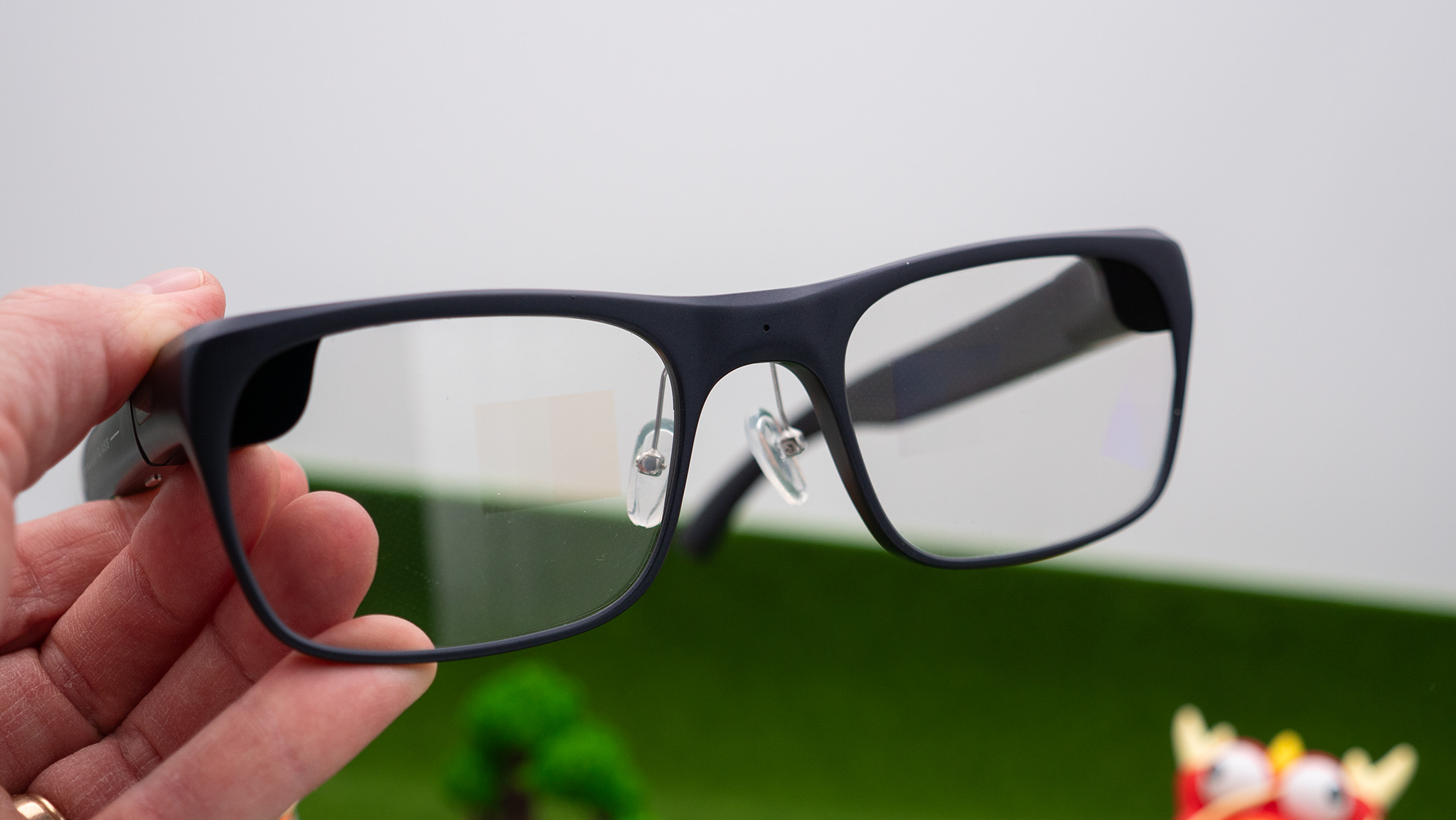
Smart display glasses have already proven to be a hit among a small group of people who were willing to invest in them - I don't go on any business trip without them unless I want to endure neck pain from looking down at a laptop. And while Assisted Reality glasses are still hit or miss, Oppo's Air Glass 3 are the most promising aR product I've seen in years.
I'm super excited to see AR glasses finally getting to the point where they can be useful beyond just mirroring an existing display, and it proves that science fiction concepts of smart glasses aren’t as far away as we thought.







